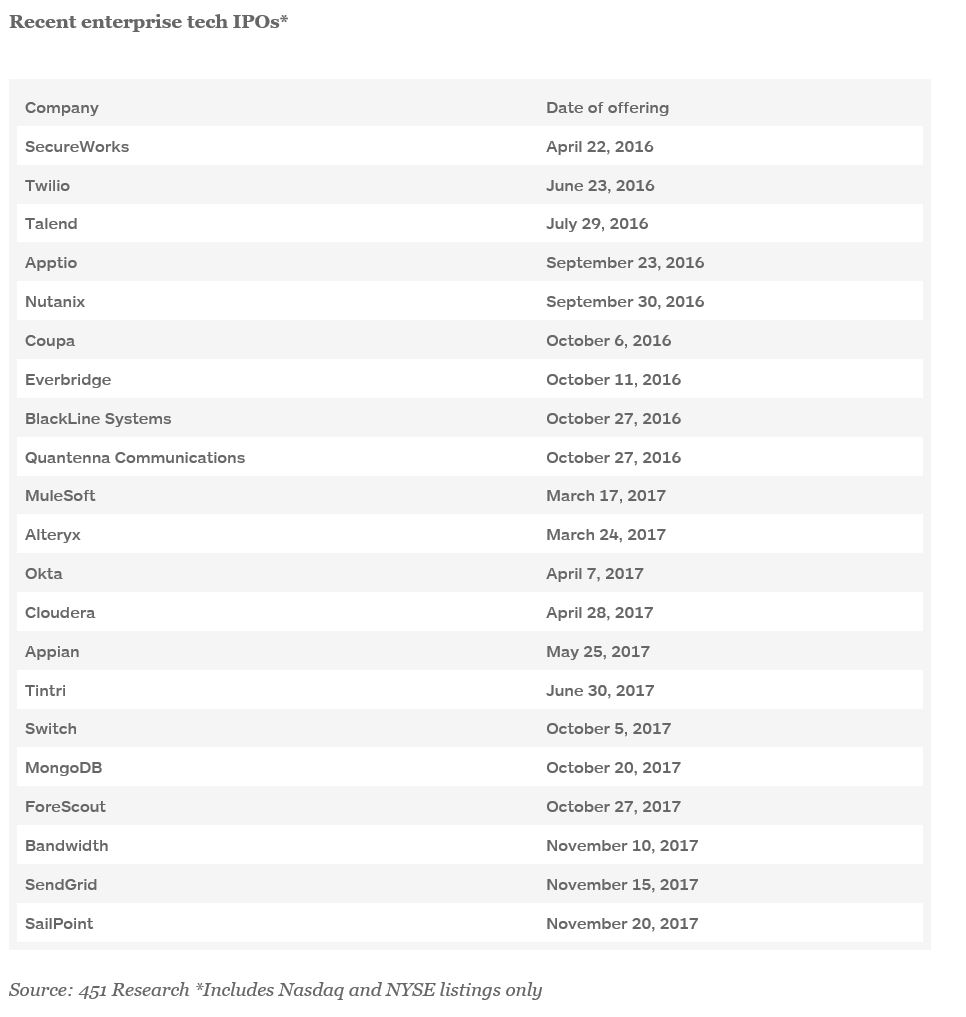Founded at the tail end of the frothy years of the dot-com bubble, the online survey provider has nonetheless enjoyed a frothy valuation of its own as it collected more than $1bn in debt and equity funding. Private-market investors have put a $2bn price on the company. SurveyMonkey’s ‘double unicorn’ valuation works out to about 8x this year’s projected revenue.
However, our forecast for a quarter-billion dollars in 2018 revenue assumes the company can continue its mid-teen growth. (That may not be a given, since SurveyMonkey increased sales just 6% in 2017.) For comparison, Dropbox – a similarly heavily funded startup that, like SurveyMonkey, also relies on lots of users choosing, at some point, to pay for the service – came to market earlier this year growing 30%. And the online collaboration vendor does more sales in a single quarter than SurveyMonkey does all year.
So Wall Street will undoubtedly scrutinize SurveyMonkey’s financial performance, which shows revenue increasing at just one-half to one-quarter the pace of other software IPOs this year. And they will look even harder at the offering since investors are still underwater from the most-recent tech IPO, Domo. Like SurveyMonkey, the BI specialist had probably drawn in as much money as it could get from private-market investors, so it turned to Wall Street. That’s hardly a compelling pitch for investors.

For more real-time information on tech M&A, follow us on Twitter @451TechMnA.




